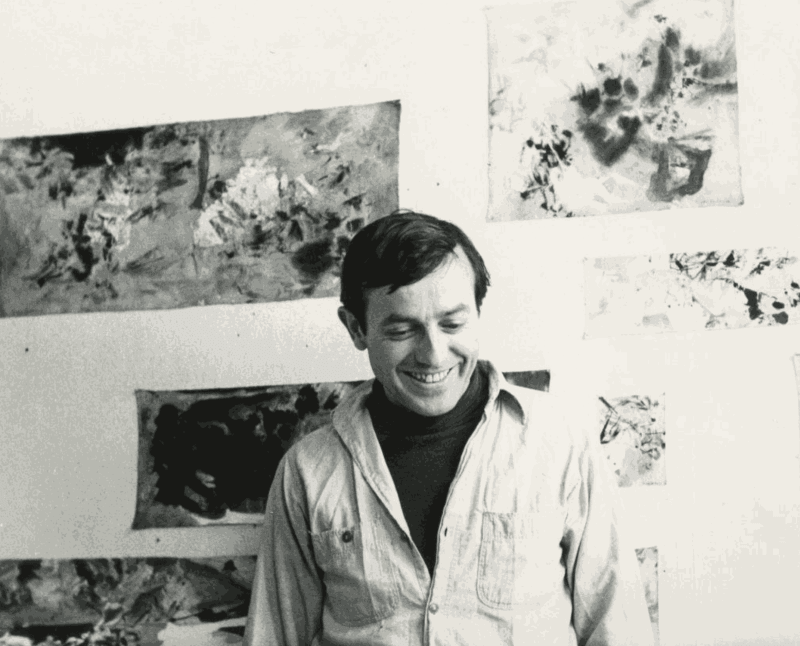Friedel Dzubas US, 1915-1994
“With Friedel’s painting the devil was in the details. If you compare closely a small sketch to a large painting, the large painting will have all the details that the small ones don’t. And it’s in those details that Friedel sought his identity.”
- Wes Frantz, studio assistant to Dzubas
One of the most ambitious twentieth-century abstract painters, Dzubas (1915-1994) is also perhaps the most traditional, particularly in the matter of his adherence to historic painterly techniques, with a special focus on the fresco painting of the late Baroque/Rococo master Giovanni Battista Tiepolo. The passionate brushwork and the complex color relationships Dzubas favored in canvases such as First Run (1972), Blue Round (1973), and Coat of Arms (1982)—among the highlights of the show—both approach and reflect the celestial brilliance of Tiepolo’s work. Mural-size paintings by Dzubas, such as Procession (1975), another exhibition high point, with its rhythmic arrangement of vertical and horizontal rectangular forms, echo the epic scale and the lofty ambition of the best eighteenth-century painters in search of divine light and sublime space. Dzubas was born in Berlin in 1915 and was classified as a Mischling, a person of so-called mixed-race, as the son of a Jewish father and Catholic mother. Early on, he faced hurdles to his artistic education both from his practical-minded father, as well as from the state, which restricted full Jews as well as Mischling access to the Prussian Academy of Fine Arts.
On the eve of World War II, Dzubas immigrated to the United States, settling first in Virginia before moving to New York in 1941. Championed by the renowned critic Clement Greenberg, he met Jackson Pollock and many other Abstract Expressionists, becoming in 1948 a member of The Club, along with a coterie of artists that included Willem de Kooning, Franz Kline, and Ad Reinhardt, among others. Dzubas shared a studio with Helen Frankenthaler in 1952, and his work of the period was included in numerous group exhibitions along with that of his like-minded peers. During this same year, his well-received solo debut at Tibor de Nagy was the start of a long and illustrious career. An influential teacher as well as an esteemed artist, Dzubas taught for some years at Cornell University and the School of the Museum of Fine Arts, Boston. A career retrospective of his work was held in 1983 at the Hirshhorn Museum and Sculpture Garden, Washington, D.C. He died in Newton, Massachusetts, in 1994.
Dzubas’s works are held in numerous prominent public and private collections throughout the world. These include the Metropolitan Museum of Art and the Whitney Museum of Art, New York; The Hirshhorn Museum and Sculpture Garden, Washington D.C.; the Museum of Fine Arts, Houston; the Israel Museum, Jerusalem, the Art Gallery of Alberta, Edmonton.
